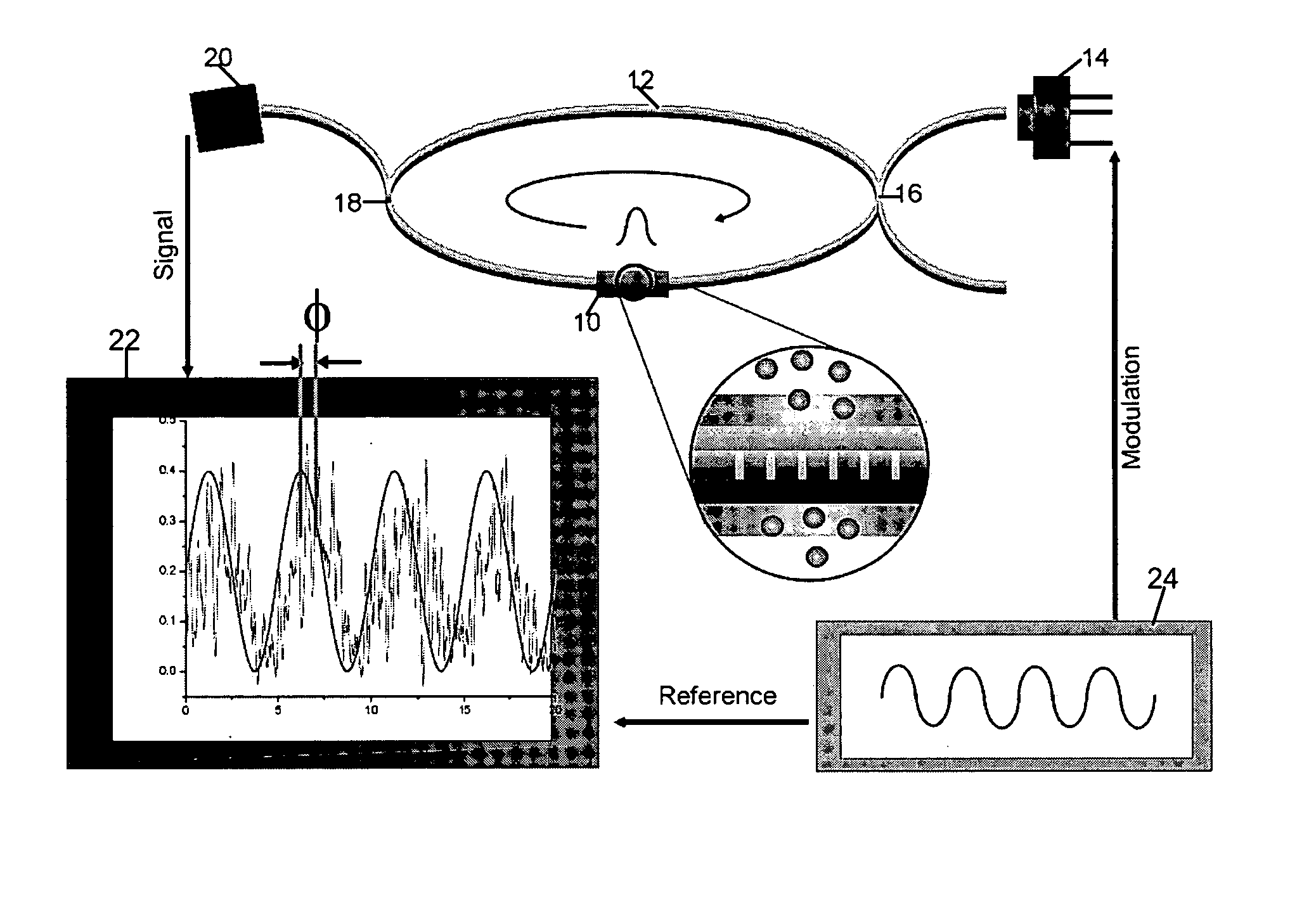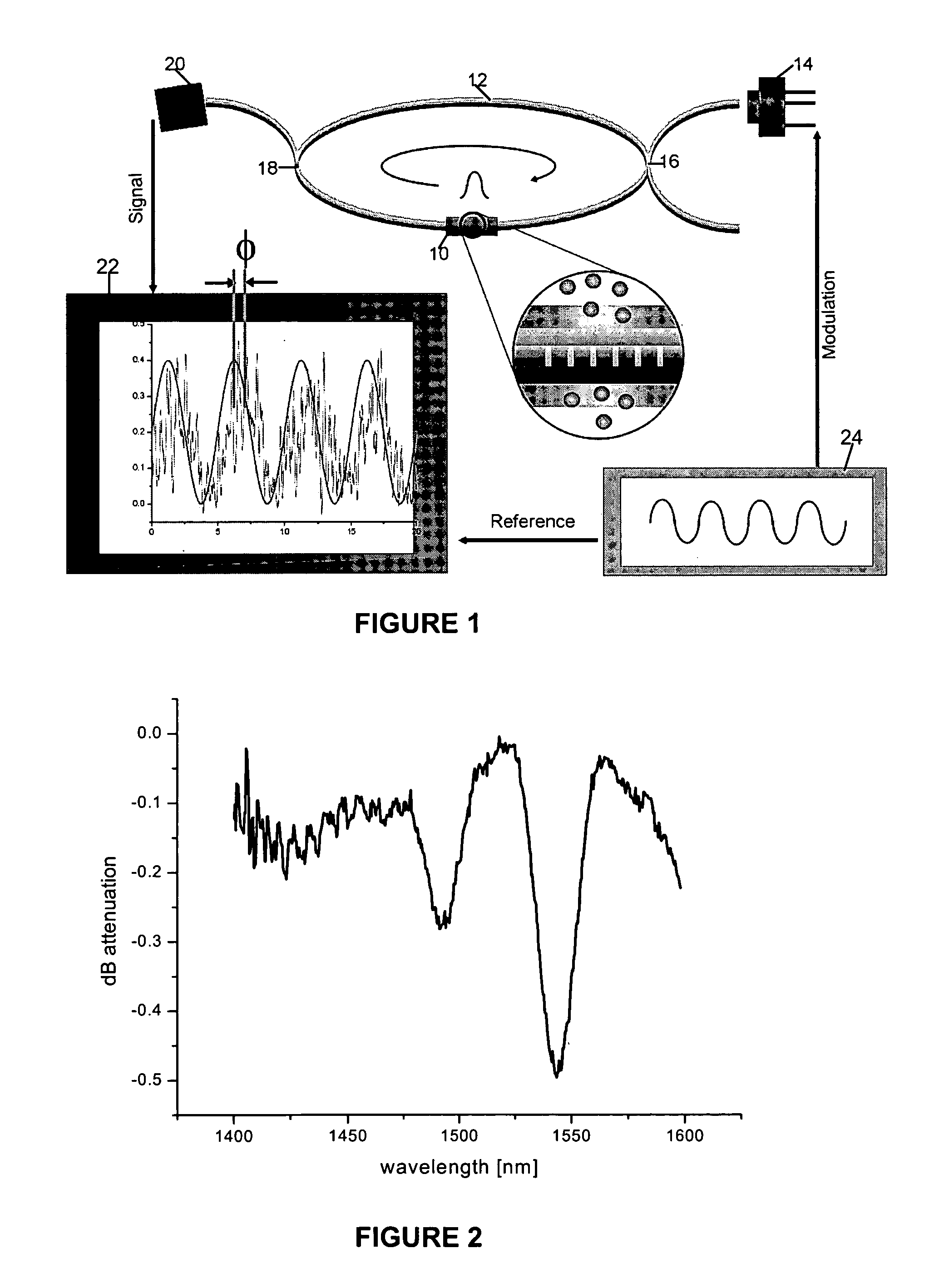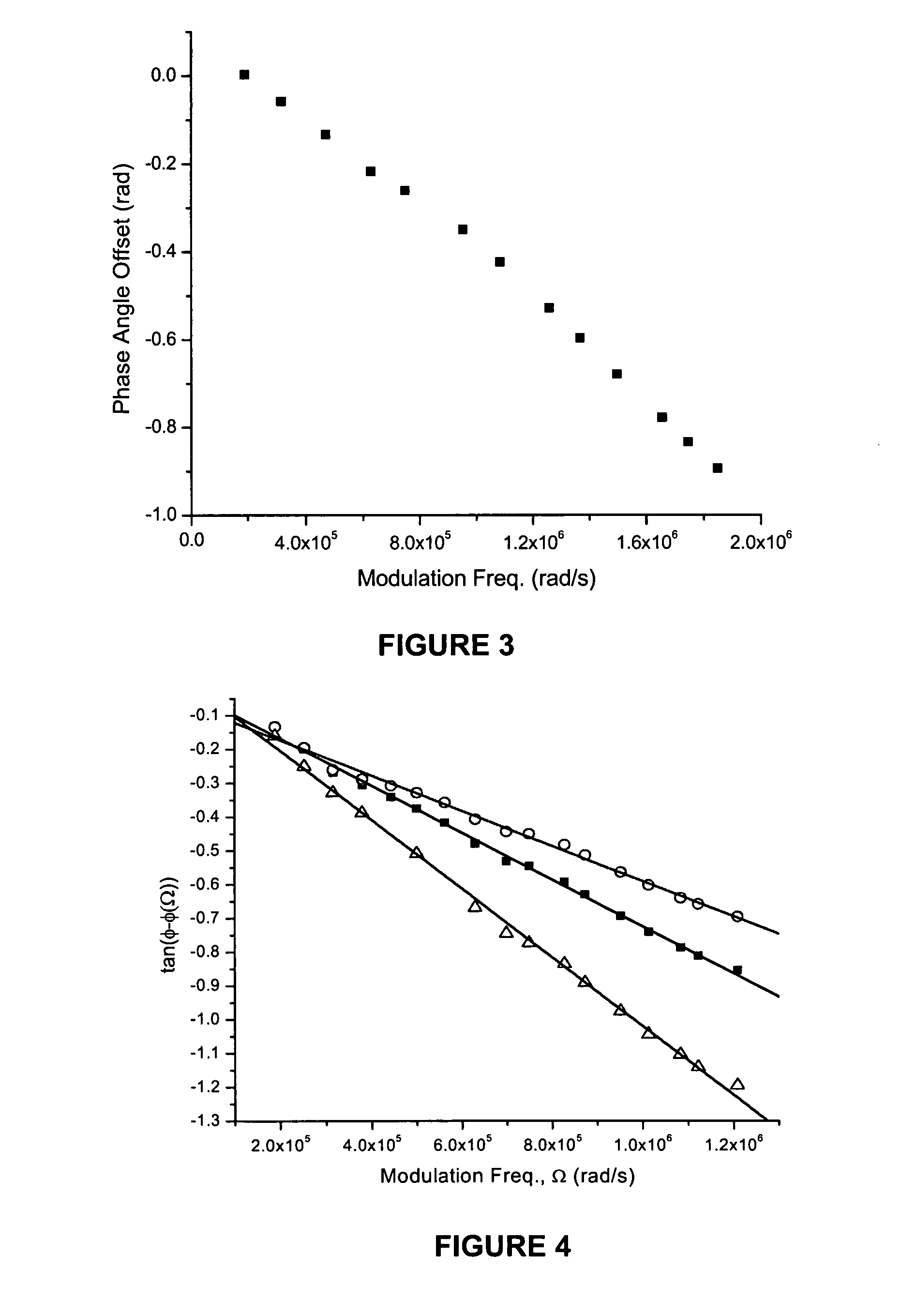Long period grating sensor methods and apparatus
- Summary
- Abstract
- Description
- Claims
- Application Information
AI Technical Summary
Benefits of technology
Problems solved by technology
Method used
Image
Examples
working examples
Example 1
Sensor Using a Long Period Grating and Fiber Loop Ring-Down Spectroscopy
Experimental Setup
[0072] The experimental setup is shown in FIG. 1. At its center is a LPG 10, with a length of 22 mm and a periodicity of 274 μm, which was custom-made by Avensys Inc. (Pointe-Claire, Quebec, Canada) using Dow Corning SMF-28 single mode optical fiber. The attenuation spectrum of the LPG in air at around 1.5 μm is shown in FIG. 2. The LPG was spliced into a loop 12 made of the same SMF-28 fiber using a fusion splicer to make a total length of the loop of about 11 m. An ANDO AQ4320D tunable diode laser 14 was modulated using a function generator 24, and the amplitude modulated light with a power of 5 mW and a bandwidth of 200 MHz was coupled into the loop using a 99.5 / 0.5 2×2 directional coupler 16 (Lightel Technologies). The intensity of light circulating within the loop was monitored using a 99.5 / 0.5 2×1 tap 18 (Lightel Technologies) and a fast InGaAs photodiode detector 20.
[0073] ...
example 2
Sensor Using a Long Period Grating and Solid Phase Microextraction
[0080] The combination of solid-phase microextraction with long period gratings but without the use of optical ring-down detection was tested in a preliminary experiment. An LPG was coated with PDMS (Dow Corning 100% silicone rubber) by evaporating the solvent from a 100 mg / ml solution of the PDMS precursor material in methylene chloride. The thickness of the resulting film was estimated to be between 10 and 500 μm and its refractive index was close to n3=1.41 (Chomat et al. 2002). Attenuation spectra of the LPG were recorded in straight transmission while the film was submersed in a saturated solution of toluene in water (concentration approx. 500 ppm). The change in position of the attenuation maximum was recorded as a function of time (FIG. 7A) and was fitted using a simple exponential growth function. A partitioning time constant of tfs=19 min was obtained for partitioning of toluene into the polymer and of only ...
example 3
Sensor Using a Long Period Grating, Solid Phase Microextraction, and Fiber Loop Ring-Down Spectroscopy
[0082] In this example a sensor based on the combination of an LPG with SPME and interrogated by FLRDS is described. In particular, this example relates to a sensor for detecting hydrophobic contaminants in water. The inset in FIG. 1 shows shematically analyte particles partitioning into an SPME film disposed on the LPG.
[0083] An LPG with a comparably weak attenuation spectrum was coated with PDMS (Dow Corning 100% silicone rubber) by evaporating the solvent from a 100 mg / ml solution of PDMS precursor material in methylene chloride. The thickness of the resulting film was between about 10 and 500 μm and its refractive index was close to 1.41. The attenuation spectrum of the LPG was recorded using fiber-loop ring-down spectroscopy in the continuous wave (i.e., phase shift) implementation. In particular, the phase angle of the synchronized output from a periodically driven laser was...
PUM
 Login to View More
Login to View More Abstract
Description
Claims
Application Information
 Login to View More
Login to View More - R&D
- Intellectual Property
- Life Sciences
- Materials
- Tech Scout
- Unparalleled Data Quality
- Higher Quality Content
- 60% Fewer Hallucinations
Browse by: Latest US Patents, China's latest patents, Technical Efficacy Thesaurus, Application Domain, Technology Topic, Popular Technical Reports.
© 2025 PatSnap. All rights reserved.Legal|Privacy policy|Modern Slavery Act Transparency Statement|Sitemap|About US| Contact US: help@patsnap.com



